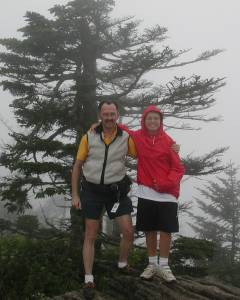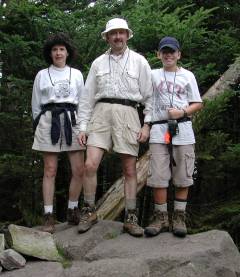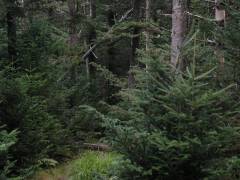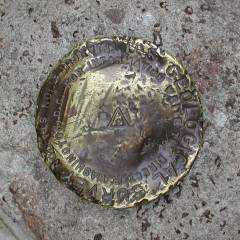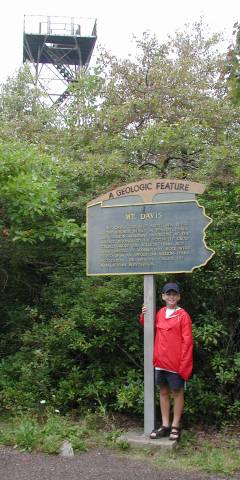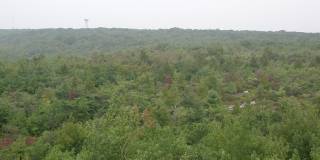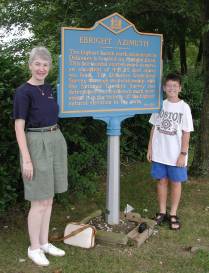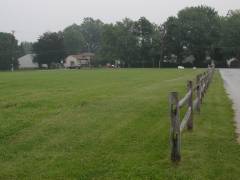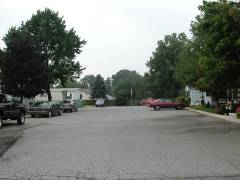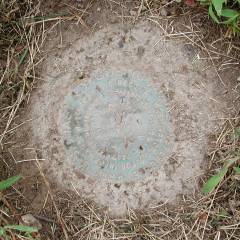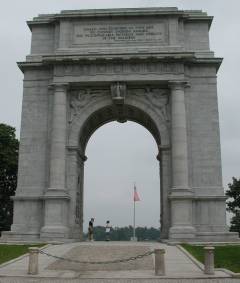|
"Country roads, take me home to the place I belong, West Virginia..."
With apologies to the late John Denver, we headed northeast out of Radford
and then cut back northwest, leaving the interstate at Harrisonburg and
driving through the thriving metropolis of Judy Gap, WV. We found the
Spruce Knob Road about a mile north of Judy Gap with no problem, but were
then stopped by "Road Closed" and "Blasting Zone" signs. Arrrrgh!!
To come so close and not be able to make it to the high point???
Not to worry. A short conversation with the construction workers and they
told us about an alternate route, another road heading west about a mile
north of where we were. Well, it was more like two miles, and a stop at the
local post office to inquire again. The alternate route took us just beyond
the construction closure and put us back on the Spruce Knob Road, albeit in
"under-construction" condition with just the rough gravel underlayment
down and not yet repaved.
|
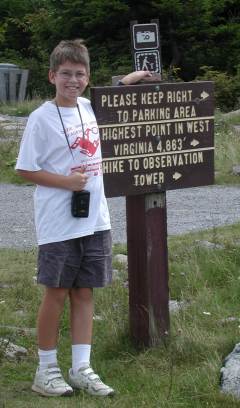
|
Once we got to the summit parking lot with this sign announcing the
high point and indicating the path to the observation tower, we were
greeted with more bad news. While they have the road closed, they are
also working on the observation tower (sandblasting and cleaning the
stonework, from the looks of it), so we had to take our summit photos
from a few yards away while watching the workmen in protective gear do
whatever it was they were doing to the stone tower.
|

|
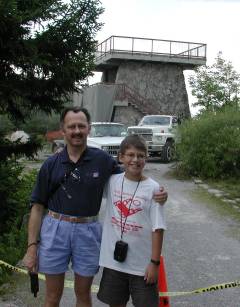
On the way back to the car, Marcia pointed out this interesting
plant. It almost looked like an already-decorated Christmas tree,
in miniature, with the flowers at the end of each branch. What is
it? Well, you'll have to find someone much more schooled in West
Virginia wildflowers to tell you. It is about a foot tall and
seems to like the rocky soil on top of Spruce Knob.
|
At any rate, we took our summit photos at the yellow tape marking
the beginning of the work zone, noting the GPS coordinates of
38° 41.997' N, 79° 31.978' W.

|
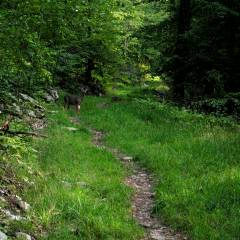
|
We returned to the West Virginia highways, leaving the highpoint
behind us, and turned north once again toward the West Virginia/Maryland
line, seeking Backbone Mountain, the Maryland highpoint. In due time,
we arrived at the old logging road which forms the trailhead, at
39° 14.728' N, 79° 29.483' W. In the
not-too-distant past, finding the highpoint marker on Backbone Mountain
required bushwhacking through the last half-mile of heavy brush, but
the "Friends of the Maryland Highpoint", affiliated with the Highpointers
Club, have improved the trail and it is now an easy walk all the way
to the top.
Not far from the road, we spotted this young buck on the trail. The
cover was dense enough that my camera thought it needed to flash, hence
the buck's bright eyes. A few yards farther up the trail, a doe and
two fawns hopped across the logging road and down into the brush.
|

|

|
|
About 100 yards from the Maryland highpoint, the trail crosses over the
West Virginia/Maryland border. There is a branch of the trail which
takes you past this stone marker on the state line, and another which
avoids the little bit of rock-hopping that is necessary to traverse
the outcropping on which the marker is mounted.
|
|
When we arrived at the summit of Backbone Mountain, referred to as the
Hoye Crest, we found the marker at
39° 14.250' N, 79° 29.131' W
with a summit log and a picnic table.
Underneath the picnic table was this exquisite tiger swallowtail which
looked like it had just emerged from its cocoon and was still drying
and firming its wings.
|

|
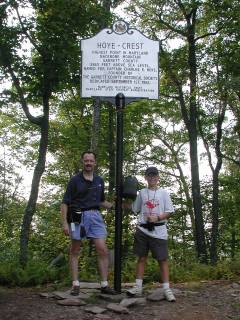
|
Another highpointer happened along as I was setting up to take our
summit photo, and we swapped photographic duties. The view to the west
of the highpoint is blocked by brush, but the view to the east,
below, is open, thanks to some judicious clearing on that side of the
mountain. Because of the haze that afternoon, only the nearest ridge
was even dimly visible, but the view would be better on a clearer day.
We walked back to the car and drove up to Grantsville, Maryland, for the
night.
|

|






